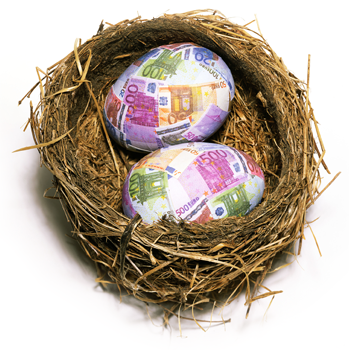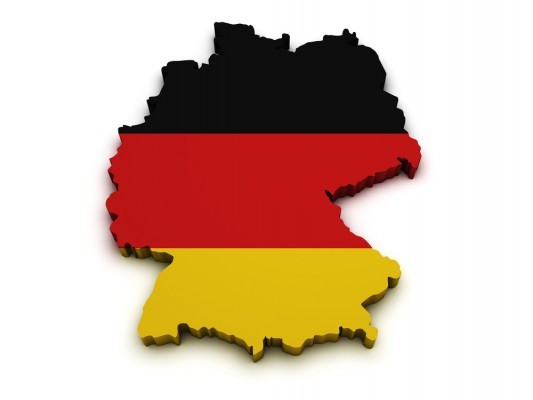Investing Strategies How to Build a GlobalInvesting Portfolio Using ETFs
Post on: 22 Октябрь, 2015 No Comment

display>
It wasn’t all that long ago that global investing was an activity that was restricted to only the wealthiest U.S. investors. If you weren’t one of America’s ultra-rich, you weren’t able to access foreign markets.
That began to change in the 1950s, with the advent of international and global mutual funds. and access further expanded over the next three decades with the introduction of single-country closed-end funds. Today, thanks to the recent explosion in exchange-traded funds (ETFs), investing in overseas stocks is now almost as easy as targeting a given market sector here at home.
In fact, although it has been a mere 17 years since the first ETF began trading in the United States (in 1993), the most recent count finds more than 290 international, regional and foreign-country-focused funds listed on the various U.S. exchanges enough to entice any investor with even a modest yen for overseas portfolio exposure.
The Changing Face of the Global Economy
And, in today’s increasingly interwoven global economy, exposure to foreign markets is almost essential for both safety and success. Investors who ignore this reality are likely to get left behind. And here’s the proof:
- The United States no longer dominates the global-stock-trading arena. Indeed, more than two-thirds of the world’s total stock-market capitalization now exists beyond U.S. borders. Investors who insist on a U.S.-only investing strategy will miss out on the bulk of the world’s investment opportunities.
- Economies in the United States, Europe and Japan are no longer the global growth-and-expansion leaders. That honor now belongs to China, India and other so-called emerging-market economies countries with the young populations and expanding middle classes needed to fuel rapid economic growth.
- Many of the new products and technologies deemed essential in today’s world cell phones, flat-screen TVs, photovoltaic cells and the like are being designed, manufactured and distributed by companies in these emerging markets. That means you must invest overseas if you want to ride the profit waves created by tomorrow’s brightest ideas.
- The U.S. dollar is struggling to maintain its role as the world’s reserve currency. But the weakness that results from this shift can translate into larger gains for U.S. investors when profits earned in stronger foreign currencies are converted into greenbacks and repatriated back to their brokerage accounts.
Of course, just because you invest in a foreign market via an ETF doesn’t mean that you’ll automatically reap a larger profit. Nor will the mere addition of an ETF or two to your domestic portfolio necessarily result in broader diversification and safety.
To achieve either (or both) of those two goals, you’ll need to carefully examine the focus and asset base underlying each individual ETF. And you’ll need to build a portfolio of ETFs that reflects the global trends you want to capture.
Crafting Your Strategy
Before you even start looking at global ETFs, however, you need to make sure you have a well-balanced core portfolio in place one devoted to capital preservation, with growth a secondary consideration. Only when you’re happy with your core holdings should you start looking outside the U.S. for enhanced growth opportunities and added diversification.
Initially, a good goal is to work toward having 25% of your assets in international investments, with an ultimate expansion to as much as 50% as your portfolio grows or as foreign ETF valuations increase. You should also strive to spread your overseas risks by investing in multiple funds at least five at the 25% level and 10 or more when you build the global sector to 50% of your portfolio value. Fund experts also recommend limiting your exposure to any single country to 15% of your portfolio’s worth.
Even more important than the allocation of assets in building a global ETF portfolio is deciding which individual countries and/or regions you want to focus on. Obviously, you want areas that are growing or poised for growth. But there are a number of other considerations, as well. Questions to ask include:
- Does the country on which the ETF focuses have a stable economic and political climate?
- Does it provide adequate corporate oversight? In other words, are companies held to internationally recognized operating and accounting standards?
- Is there a good legal environment? By that, we mean does the country’s judicial system uphold contracts, adhere to principles of due process and honor the rule of law, and is there a minimal level of corruption?
- Do the country’s markets practice fiscal discipline?
- Is the economy driven by a particular force or is it heavily dependent on a single commodity (for instance, oil and gas in Russia or copper in Chile)?
- Is the country’s currency freely convertible and relatively strong?

The first element politics can be a particularly crucial one in international investing, particularly when it comes to emerging economies. Often, the election of a new government can signal increased stability or a change in attitudes toward business that will fire up a market regardless of what’s going on in the economy. One good example is Indonesia’s 2008 election, which sparked a 100% gain by the Jakarta market in 2009.
The biggest advantage of using a U.S.-based ETF to invest abroad is that you minimize the risks associated with buying the stocks of individual foreign companies. For example, rather than trying to pick the best stocks in Chile to capitalize on the recent election of a new pro-market government, why not invest in the Chilean market as a whole by buying the iShares MSCI Chile Investable Market Index Fund (NYSE: ECH ) which would enable you to benefit from the gains in all of the leading stocks on the Santiago Exchange?
Similarly, if you’re concerned about weakness in a given market say Japan you can hedge against pullbacks by investing in one of the new inverse ETFs, such as the ProShares UltraShort MSCI Japan fund (NYSE: EWV ). which rises in value when the Nikkei 225 Index falls.
ETFs also offer low management costs usually around 0.25% annually relative to many actively managed mutual funds. And because they trade like regular stocks, ETFs are more tax efficient than some other types of funds, which can generate tax liabilities even when you don’t sell your shares.
The Advantage of ETFs
There are, of course, risks in international ETFs, just as with any investment foreign or domestic. But, there are some steps you can take to protect yourself, including:
- Make sure you’re buying the countries you think you are. For example, if you’re uncomfortable with trying to pick one or two of the top emerging markets, you might instead want to consider a broad-based ETF such as the iShares MSCI Emerging Markets Index Fund (NYSE: EEM ). That fund invests in 23 different countries, but fully 50% of its assets are concentrated in just four: South Korea, Brazil, Taiwan and China. That means you’ll be getting far less exposure than you might want to such emerging markets as Malaysia or Indonesia.
- Make sure the single-country ETF you choose really buys you a diversified chunk of that nation’s market. For example, the iShares FTSE/Xinhua China 25 Index fund (NYSE: FXI ) invests in a basket of 25 stocks, but 50% of its assets are committed to the shares of just the five largest companies.
- Protect yourself by using stop-loss orders (the availability of which is a major advantage ETFs have over regular mutual funds and index futures). Position those stop losses to get you out of a position if your fund pulls back by 10% to 15%, or breaks through technical support delineated by the 200- or 50-day moving averages. ETF shares also have related options, so you can gain additional protection by buying puts as a hedge.
As a final protection and a means to ensure you don’t miss rapidly developing new opportunities you should review your global ETF portfolio on a regular basis, once a year at a minimum. This will help you determine when to sell off positions that have become overvalued and to decide whether to increase the weighting of underperformers or to add new funds reflecting overseas markets on the verge of turning higher.
In the list that follows are 10 internationally focused ETFs for your initial consideration, four that provide a broad overseas focus and six that represent individual markets around the world. All won’t be appropriate for you, but at least a couple should fit with your existing core portfolio and expand your profit horizons beyond America’s borders. Those 10 ETFs consist of:
- MSCI Europe, Asia and Far East Index fund (NYSE: EFA ), recent price: $53.27: Invests in 21 developed countries around the globe.
- iShares S&P Latin America 40 Index Fund (Nasdaq. ILF ), recent price: $46.97: Seeks to mirror the performance of the S&P Latin America 40 Index. which tracks 40 stocks from Mexico, Brazil, Argentina and Chile.
- iShares MSCI EU Index (NYSE: EZU ), recent price: $33.88: Seeks to provide investment results that match the price and yield performance of an index of publicly traded securities in the European Monetary Union (EMU) markets.
- BLDRS Emerging Markets 40 ADR Index (Nasdaq: ADRE ), recent price: $43.08: Tracks the BNY Emerging Markets 50 ADR Index, which includes American Depositary Receipts (ADRs) of 50 of the most actively traded companies from international emerging markets. Component stocks have market caps ranging from approximately $5 billion to more than $68 billion.
- iShares MSCI Brazil Index Fund (NYSE: EWZ ), recent price: $70.76: Tracks the performance of the Brazilian market, as measured by the MSCI Brazil Index.
- iShares MSCI South Africa Index Fund (NYSE: EZA ), recent price: $61.02: Tracks the performance of the South African market, as measured by the MSCI South Africa Index.
- iShares MSCI Spain Index Fund (NYSE: EWP ), recent price: $40.77: Seeks to match the performance of the MSCI Spain Index.
- iShares MSCI Canada Index Fund (NYSE: EWC ), recent price: $26.63: Tracks the performance of the MSCI Canada Index, which holds a stock portfolio composed of equities with roughly 85% of Canada’s market capitalization.
- iShares MSCI Australia Index Fund (NYSE: EWA ), recent price: $21.78: Tracks the performance of companies included in MSCI’s Australia Index.
- iShares MSCI Taiwan Index Fund (NYSE: EWT ), recent price: $12.40: Seeks to match the performance of the MSCI Taiwan Index.
In case you didn’t notice, the six individual country funds represent each of the six populated continents, providing equity exposure that truly circles the globe. And, if Antarctica ever gets a publicly traded stock, you can bet a seventh continental ETF listing won’t be far behind.
News and Related Story Links :
Exchange-traded funds .
Stop-Loss Order .
Financial dictionary
Encyclopedia entry: Exchange-traded funds .














